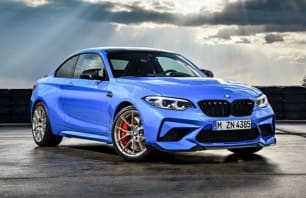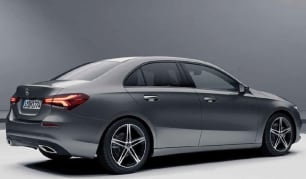I admit, I thought I’d get a bit more in the cabin of the A35 sedan. There’s no electric steering wheel adjustment, no heated steering wheel, and the fact adaptive cruise control is optional (it’s standard on some $25K cars!) is a bit rude, too.
That isn’t to say that it’s not an eye-catching space, one that will hit hard on the bling-o-meter, and will definitely impress anyone who isn’t familiar with Mercedes’ recent cabin design traits.
The twin screens are dazzling - crisp and beautiful to behold, and with graphics that are extremely high resolution. The menus have been designed to be simple, but honestly, it’s a bit confusing until you’re initiated.
Also, I found the media screen to be very glitchy. On multiple occasions it would not respond to touch, and once it even reset itself. I also had several problems connecting to Apple CarPlay. Note: I was using a Mercedes-Benz USB-C adaptor to USB-Lightning cable with an iPhone XS, and I think maybe the adaptor had a part to play in the problems I encountered.
The touchscreen is just one way to interact with the media controls, as there’s a touchpad between the front seats, and the driver has a thumb-controller on the steering wheel to jump between screens. And there’s voice control as well, with the MBUX system’s ‘Hey, Mercedes’ recognition allowing you to ask for things to be adjusted.
Furthering the wow-factor up front are beautifully designed air vents that light up blue when you turn the temperature down or red when you up the heat. There’s configurable ambient lighting for the cabin, which makes the A35 a bit of a showstopper at night, and our car had the no-cost optional red and black Lugano leather trim, which is either going to be your thing, or not.
The space for adults up front is decently accommodating, with good headroom and width, plus nice soft touch points where there should be, and there are bottle holders in the doors. There are three USB-C points up front, a pair of cup holders between the seats, and a wireless (Qi) phone charging bay.
The steering wheel is a nice shape and easy to hold, though I’m still not convinced by the little digital displays for the drive-mode dials - they’re toy-like teeny-weeny screens and look a bit pixelated compared to the other displays in the cabin.
Rear seat space is not as good as you might hope or expect, given the size of the car. As a 182cm (6.0ft) man with the driver’s seat set for me, my knees were hard against the seat in front, my toes were squashed and my head was just brushing the headliner, too.
That mightn’t be a problem for you - maybe your only rear seat riders will be short, or young. There are dual ISOFIX child-seat anchor points and three top-tether restraints for baby seats, if that’s the case.
And they’ll be well catered for, with a pair of USB-C ports, as well as directional air-vents, mesh map pockets, and bottle holders in the doors as well as a fold-down armrest with pop out cup holders.
Boot space will likely matter to you if you’re buying a sedan over the hatchback model, and you’ll find an additional 60 litres of boot space here over the five-door model, with 430L of cargo capacity.
That should, in theory, be large enough to fit all three of the CarsGuide cases (124L, 95L, 36L), but the shape of the cargo hold meant I only managed to fit the smallest case with the middle or largest case, but not all three together. Soft luggage could help.
There’s no spare wheel under the boot floor, as the A35 has a tyre repair kit.

